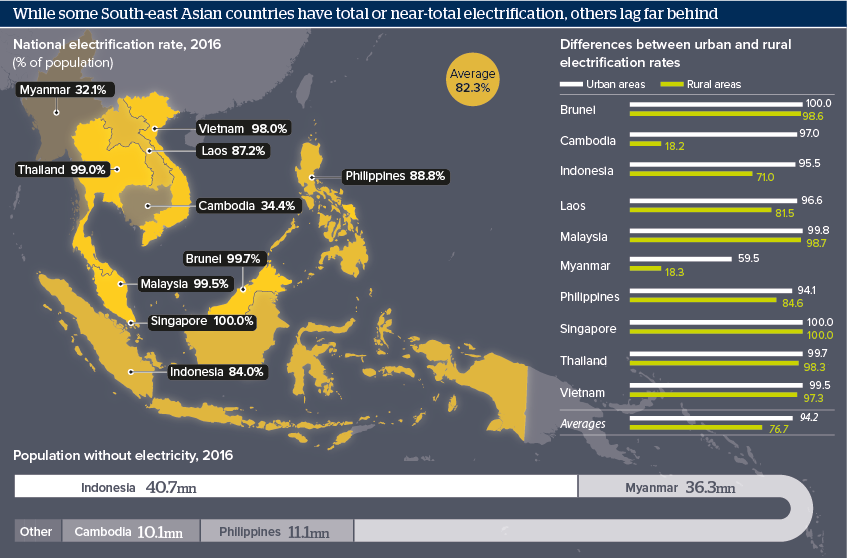Uneven electrification will affect ASEAN competition
Electrification is a driver and symptom of economic growth, but South-east Asian electrification rates are uneven
Source: International Energy Agency -- World Energy Outlook 2016; World Bank (including UN, Eurostat, US government and Secretariat of the Pacific Community data); Oxford Analytica
Outlook
Electricity powers social and economic development; this development in turn drives demand for yet more electricity as economies grow in size, complexity and automation. In 2016, the average national electrification rate was 82.3% in South-east Asia, according to the International Energy Agency. In urban areas this rate was 94.2%, and in rural areas 76.7%.
However, notable laggards are Cambodia and Myanmar, two of South-east Asia’s fastest-developing economies. Disparities in electrification contribute to the uneven competitiveness of South-east Asia’s economies. These gaps are expensive to close, so poorer states will need international donor aid to supplement tax incomes -- Myanmar’s electrification to 2030 could cost at least 40 billion dollars.
Impacts
- Electrification can help to reduce poverty.
- Electrification will allow more automation.
- Expanding electrification will bring investment opportunities in renewable and non-renewable energy infrastructure.
- Greater electrification will see more coal burning and hydropower dam construction; environmental and land rights controversies are likely.
See also
- Indonesia’s coal and energy plans face hurdles - Dec 7, 2017
- South-east Asian green bond demand will soon grow - Sep 26, 2017
- Indonesia regulatory shifts could hit policy outlook - Sep 12, 2017
- Cambodian mining investment need will grow - Jul 19, 2017
- Myanmar’s electrification plans need foreign funds - Apr 19, 2017
- More graphic analysis
